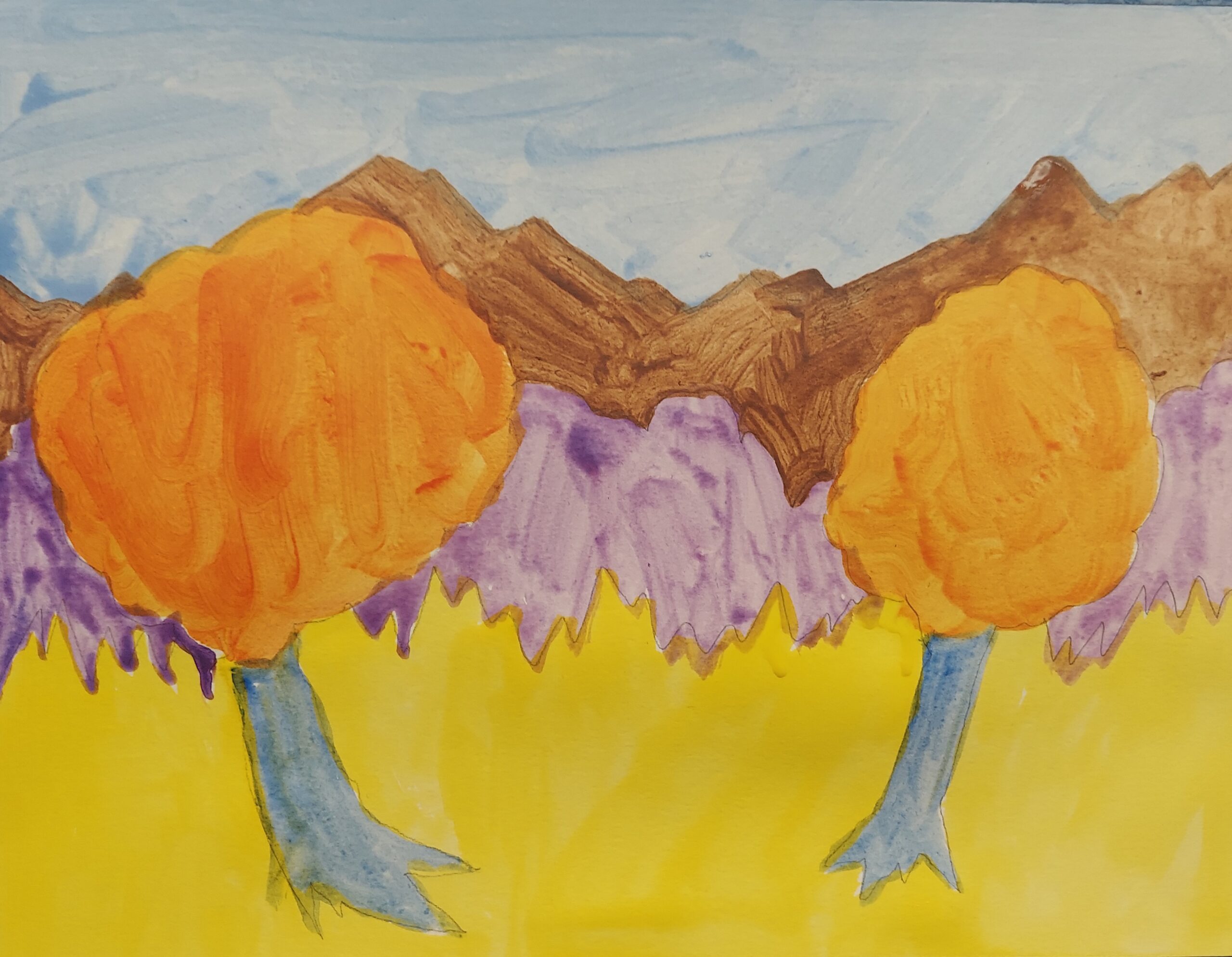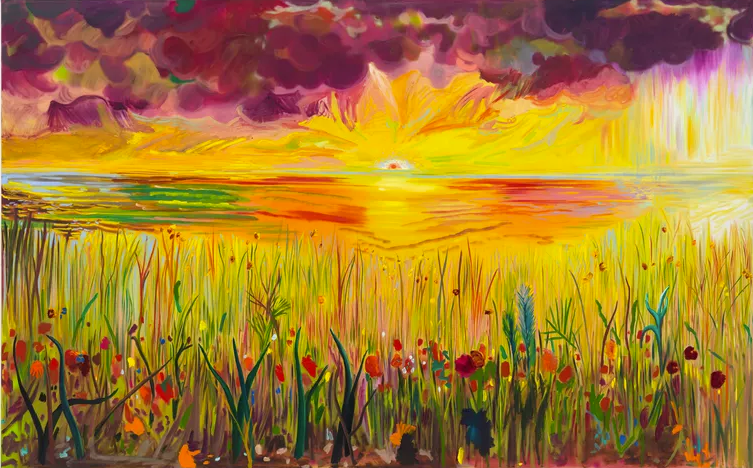Overview
Students will begin painting an expressive landscape.
Materials and Tools
- Tempera cake set or acrylic paint in plastic containers—red, yellow, blue, and white
- Water containers
- Variety of paint brushes
- Watercolor paper or canvas or canvas board
- Sponge or paper towels
- Landscape reference images
*Remove or limit the amount of black offered to students to encourage them to mix complementary colors to create the appearance of darker values instead of relying on black.
Objectives
Students will understand that:
- Painting is a process that takes time and involves multiple steps.
- Paintings are built up with layers.
- Using a variety of techniques can make a painting more interesting.
- Techniques and colors can express different feelings.
- Exaggerating colors, lines, shapes, textures, or details can create more expression.
Students will be able to:
- Begin developing an expressive landscape from their imagination.
- Work from wash to layer, light to dark, and simple to detailed.
Activities
Introduce Expression:
Techniques and colors in an artwork can convey different emotions. Exaggerating colors, lines, shapes, textures, or details can heighten expression and more strongly evoke these feelings.
Ask students to brainstorm and share in pairs, if desired.
What feeling would you like your painting to evoke? What features, shapes, colors, or textures might create that feeling?
Model Beginning an Expressive Landscape Painting
Introduce and Model ‘Thin to Thick’:
Model mixing and adding washes of color to your paper or canvas.
Emphasize:
When painting with acrylic paint, working from thin to thick refers to the amount of paint on the surface of your canvas or paper. It’s important to build up layers of paint slowly.
Work Time:
As students begin to create an expressive landscape painting, encourage them to:
- Start by sketching shapes in the foreground using a light color.
- Use a large brush to add washes of expressive color to cover large areas of your paper or canvas completely.
- Using a variety of brushes, begin to work from the top of the paper or canvas downwards.
Sky → Background → Middle ground → Foreground
- Use a variety of techniques to develop different areas of your landscape.

Remind them to work from:
- Thin to thick using layers.
- Light to dark.
- Simple to detailed.
Reflection
- What was surprising about today’s process?
- What do you plan to add during the next class?
Vocabulary
Expressive, opaque
Resource

